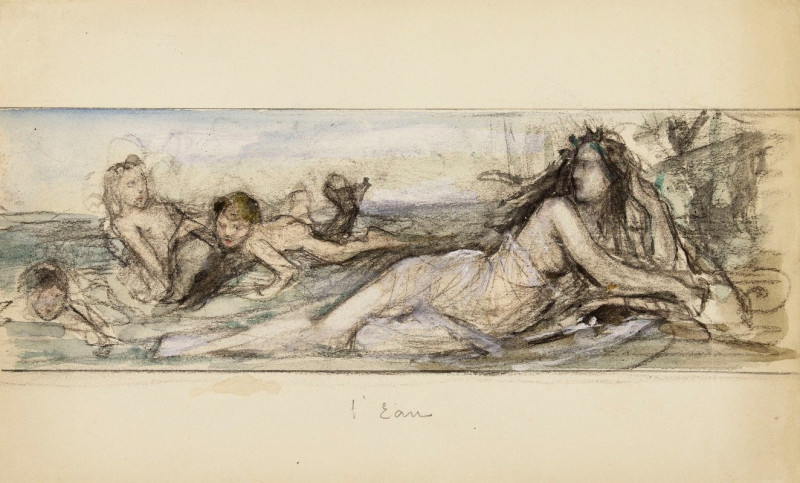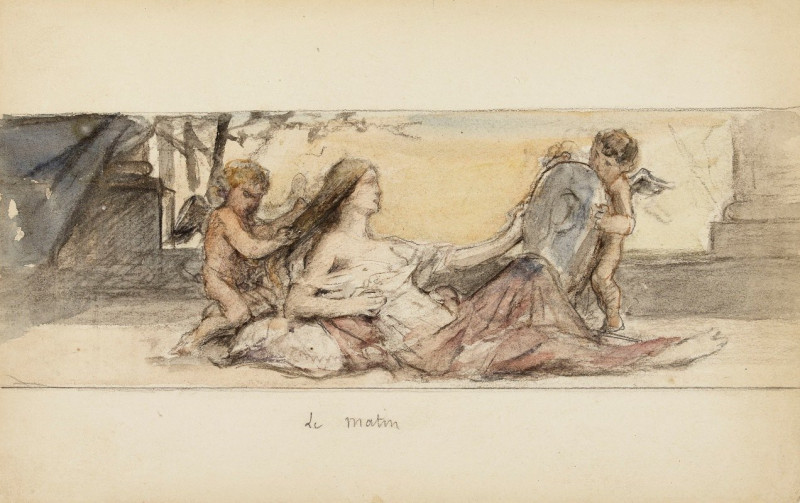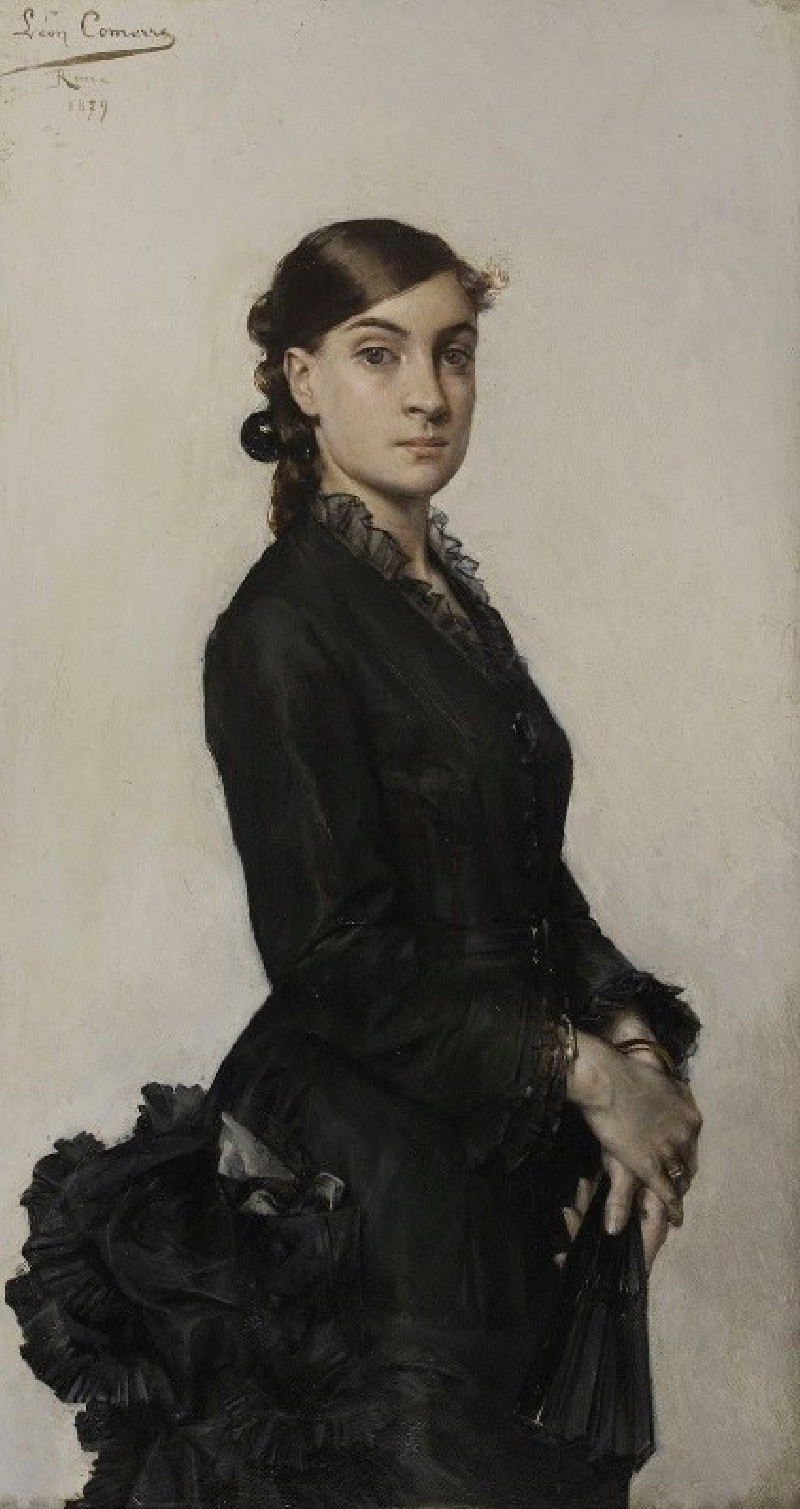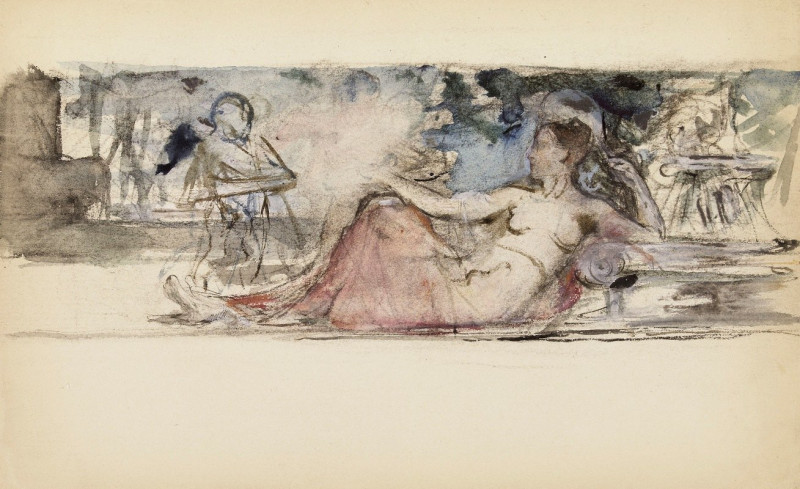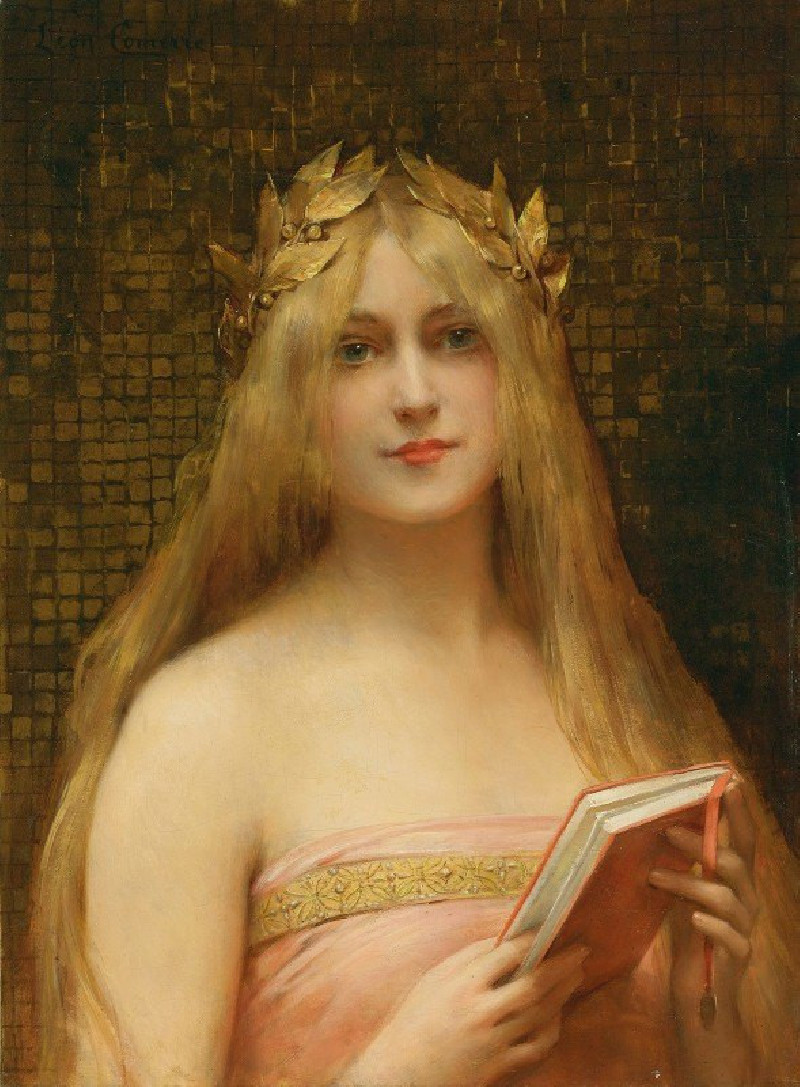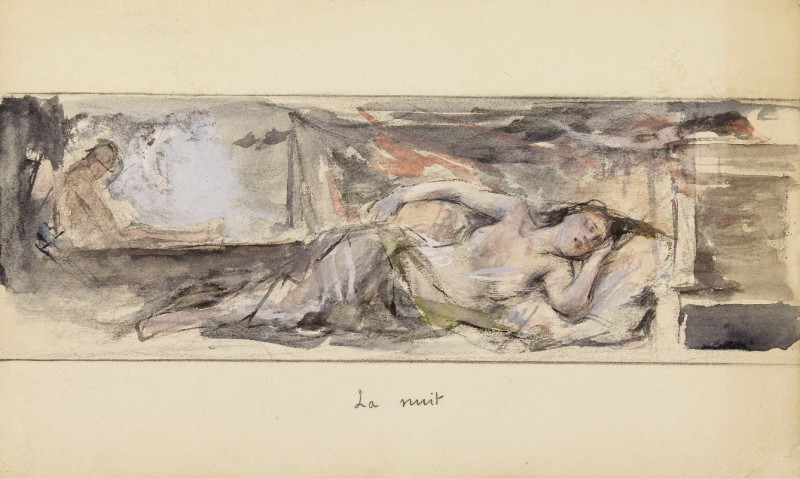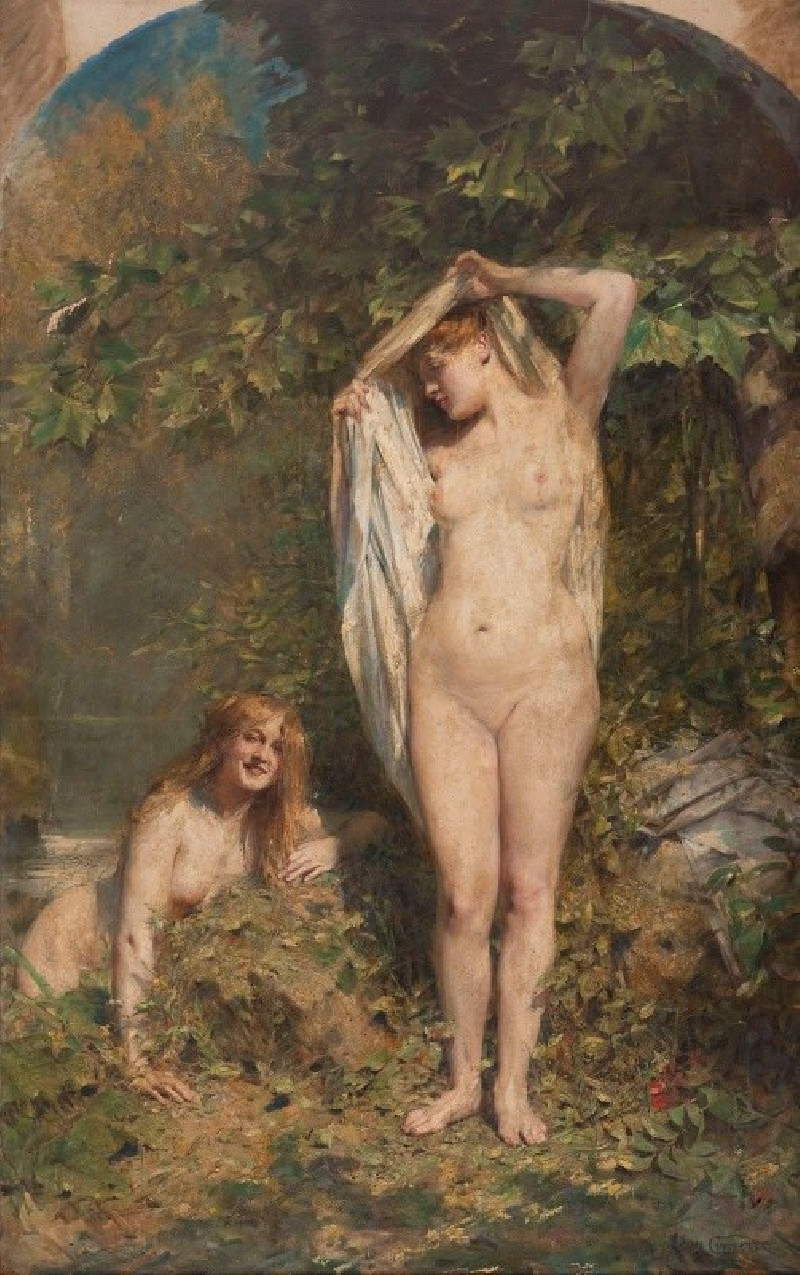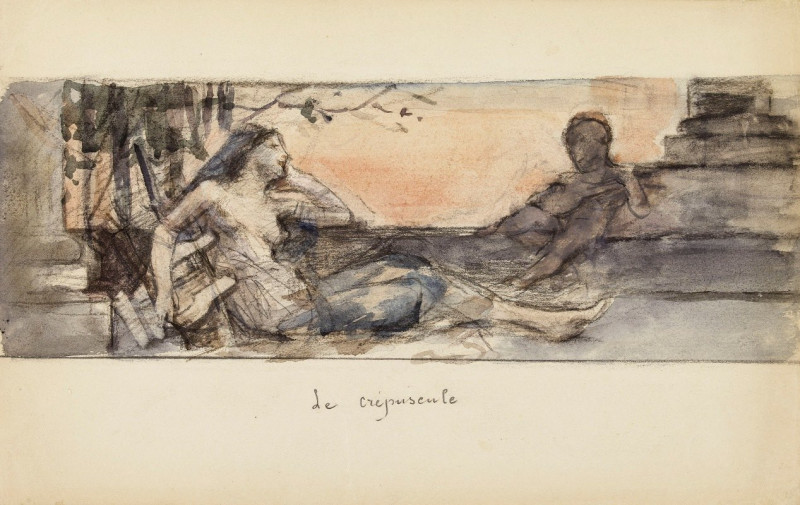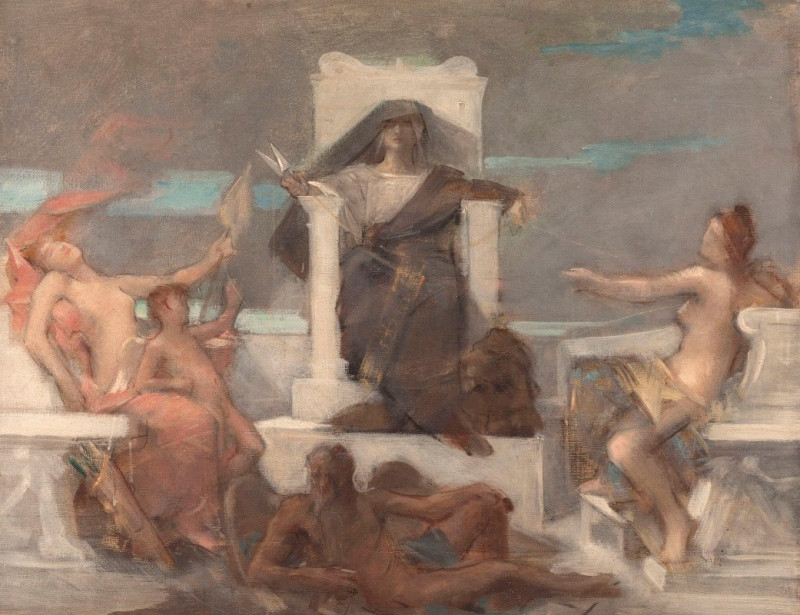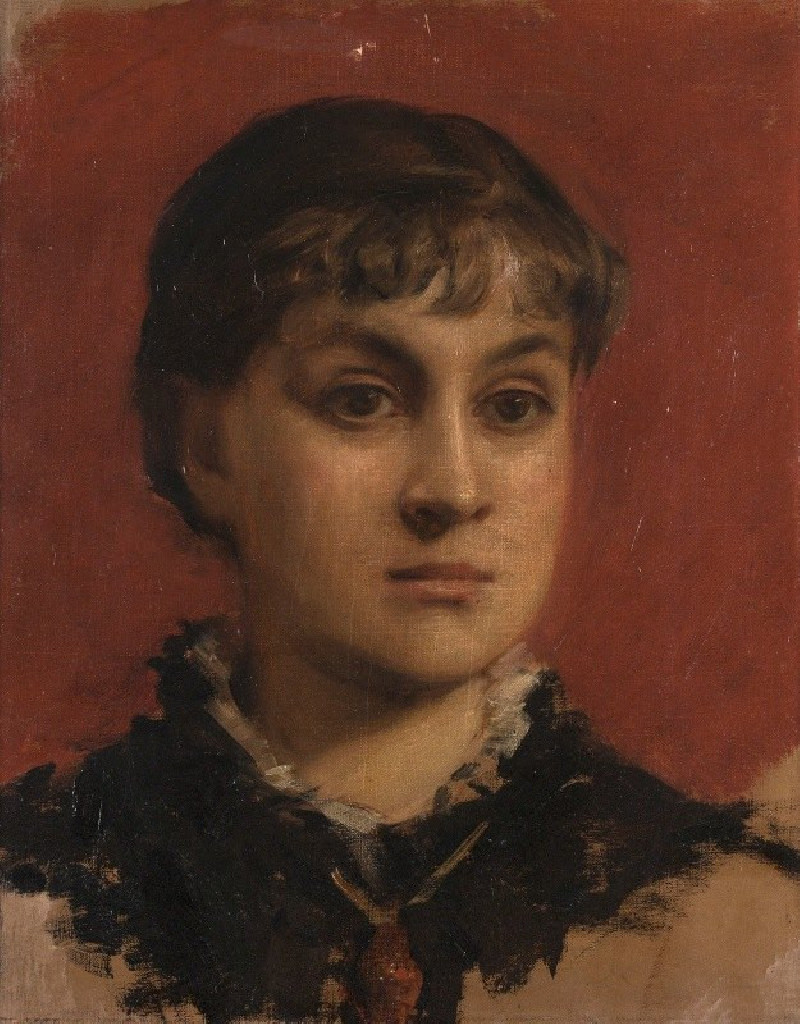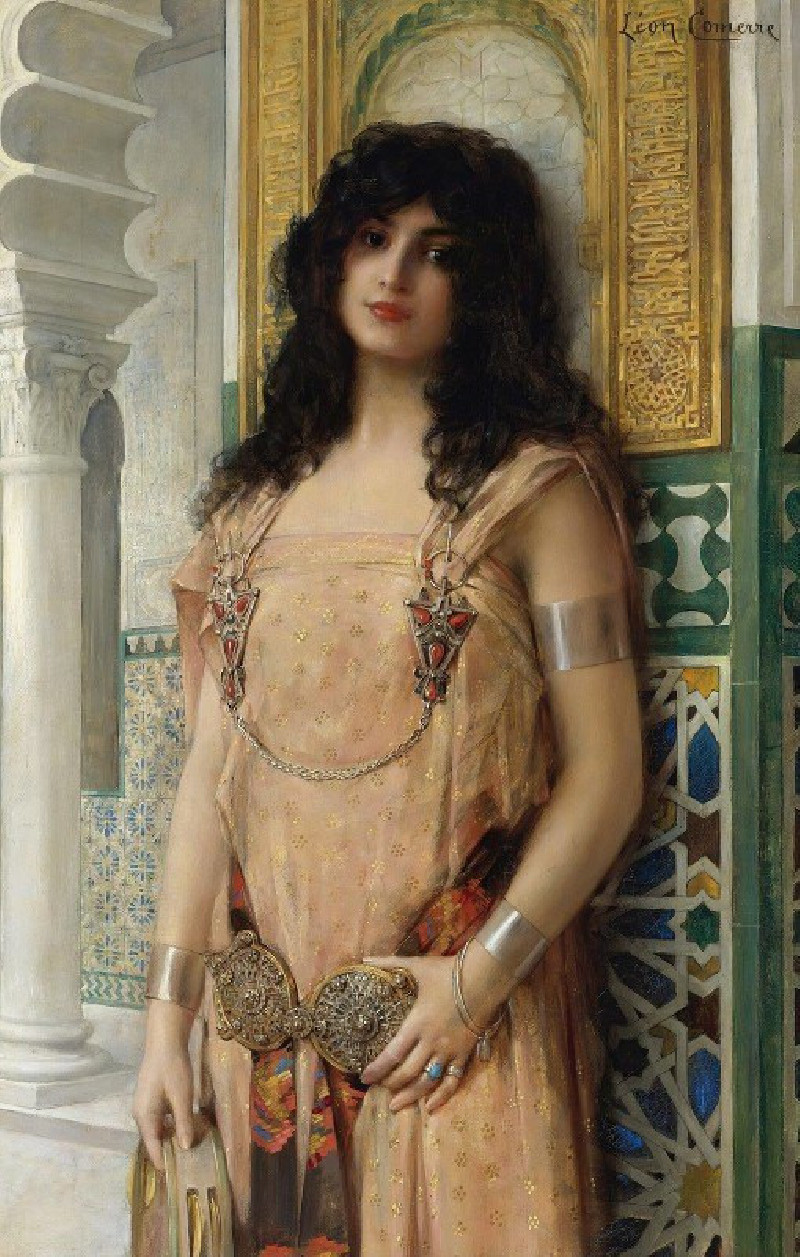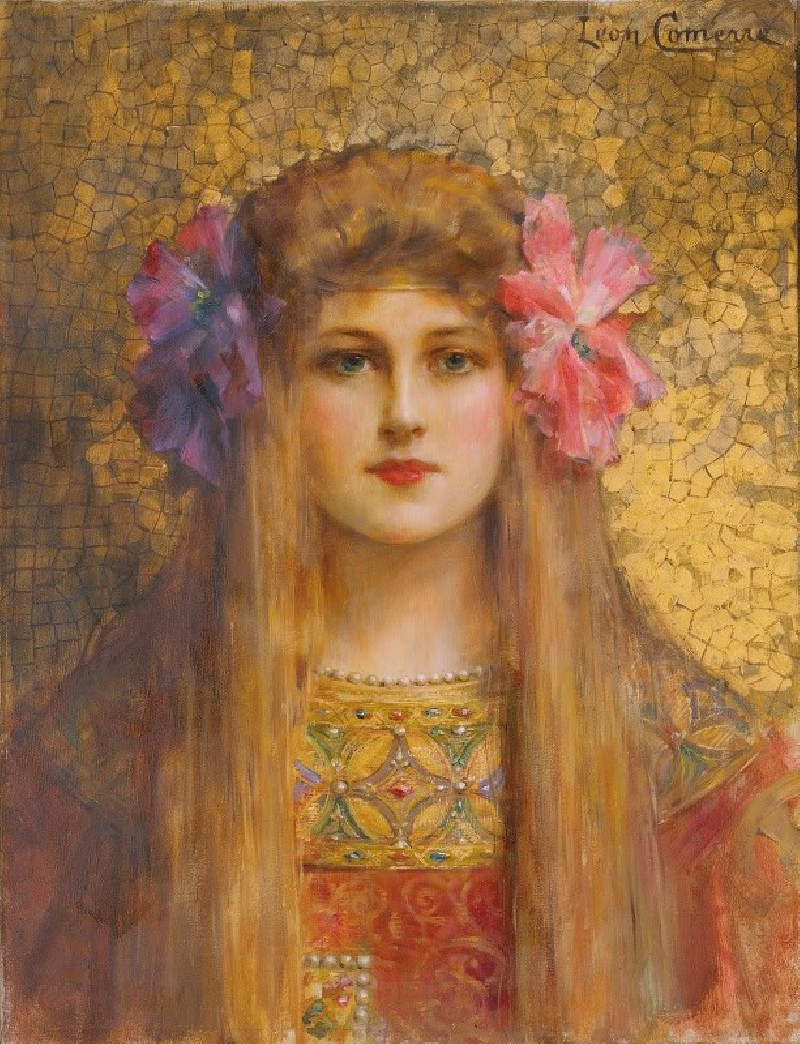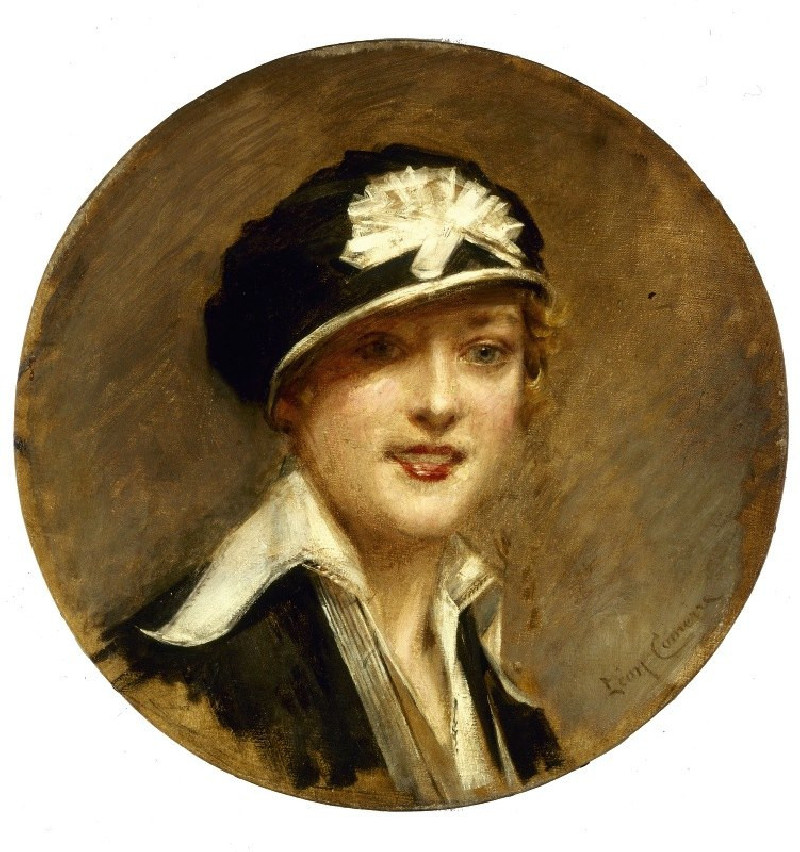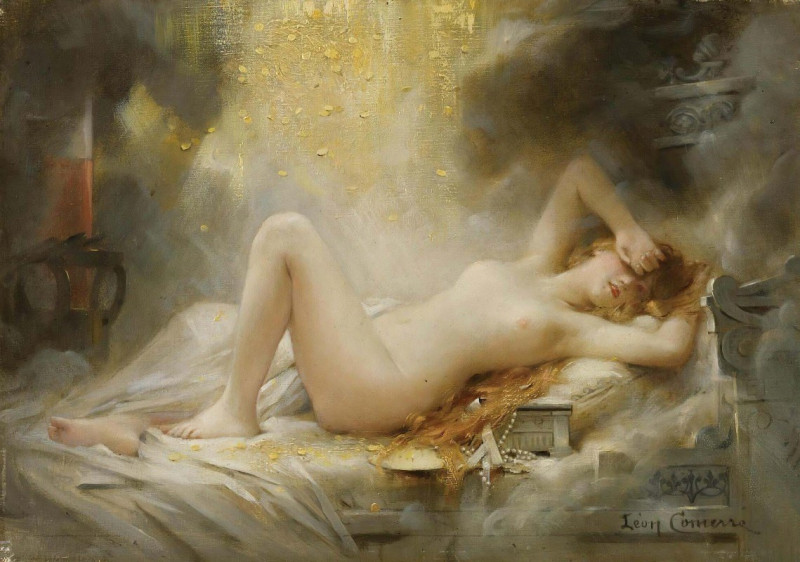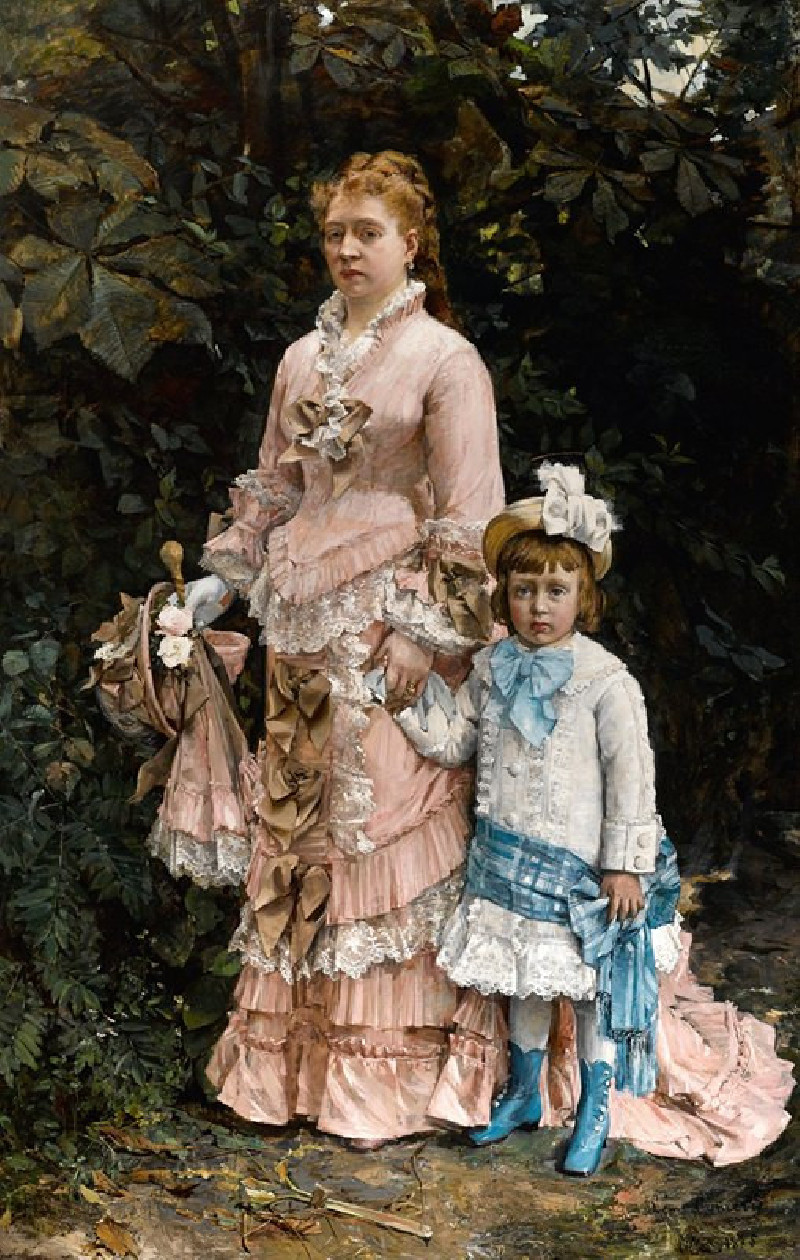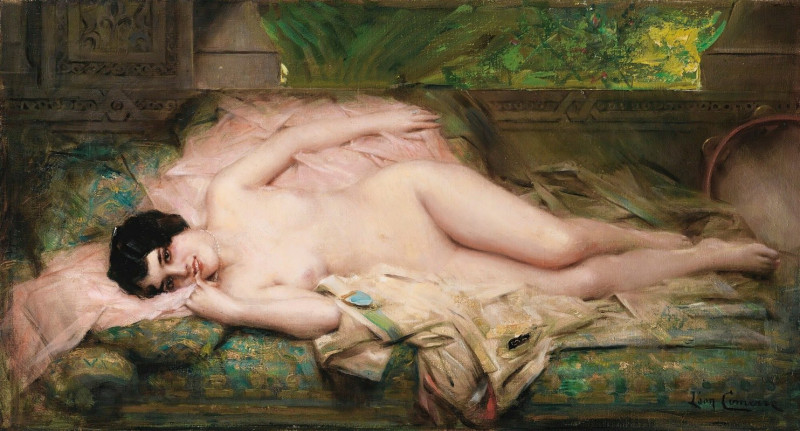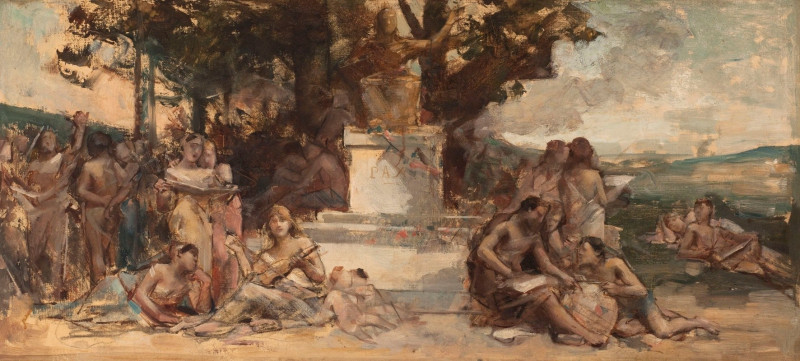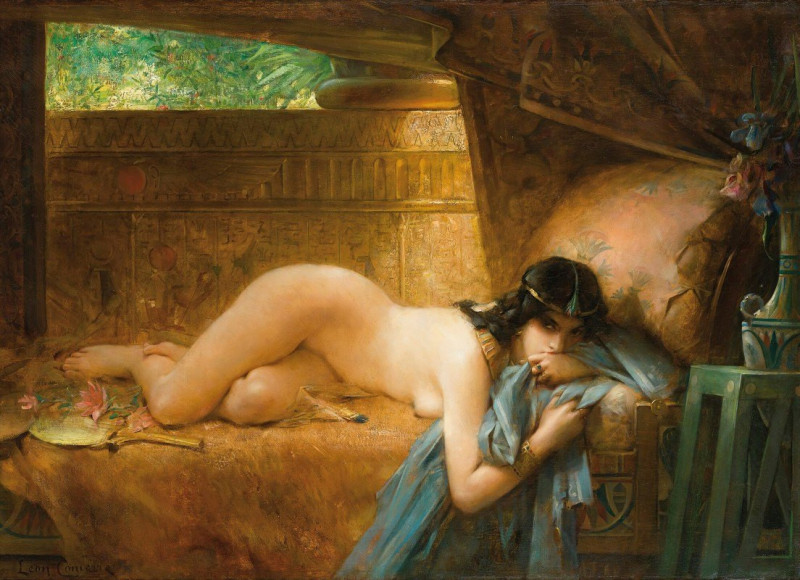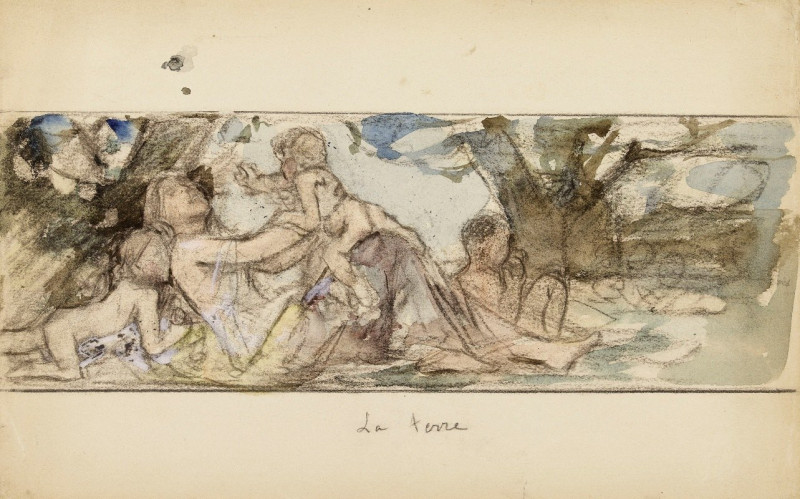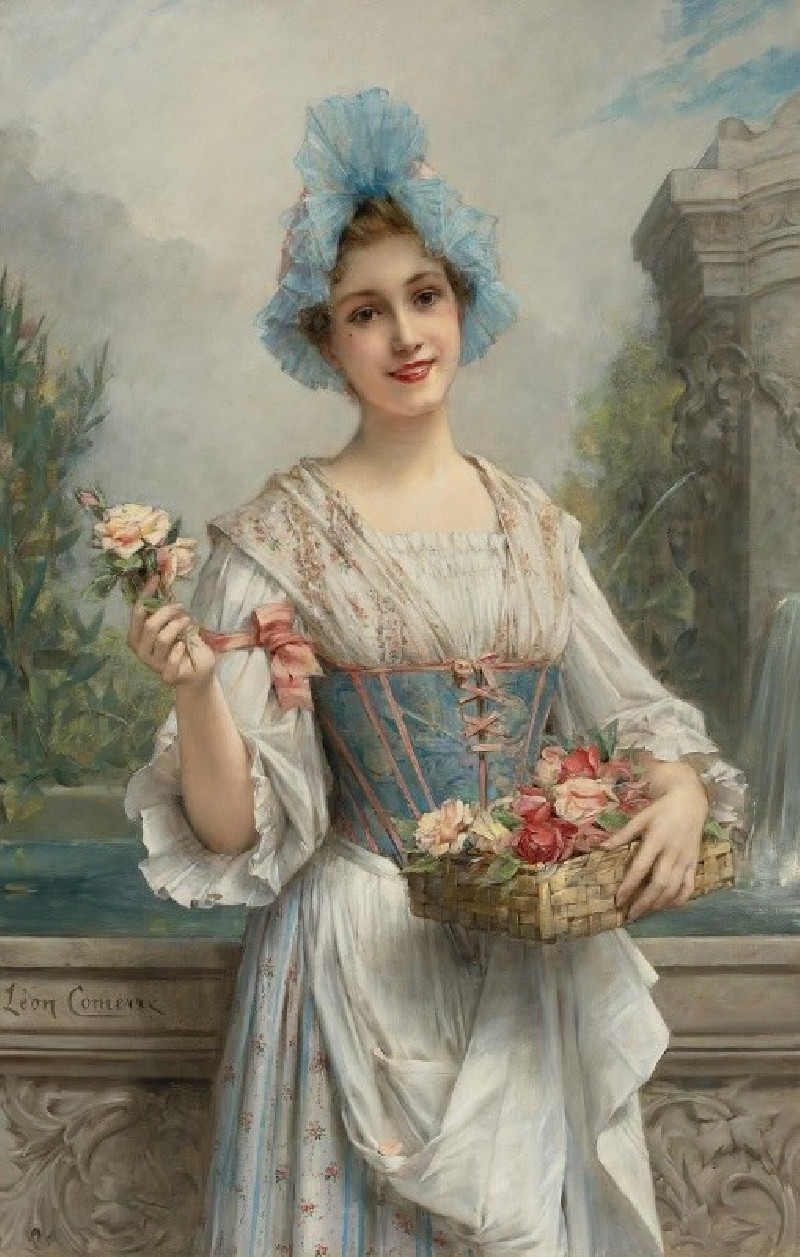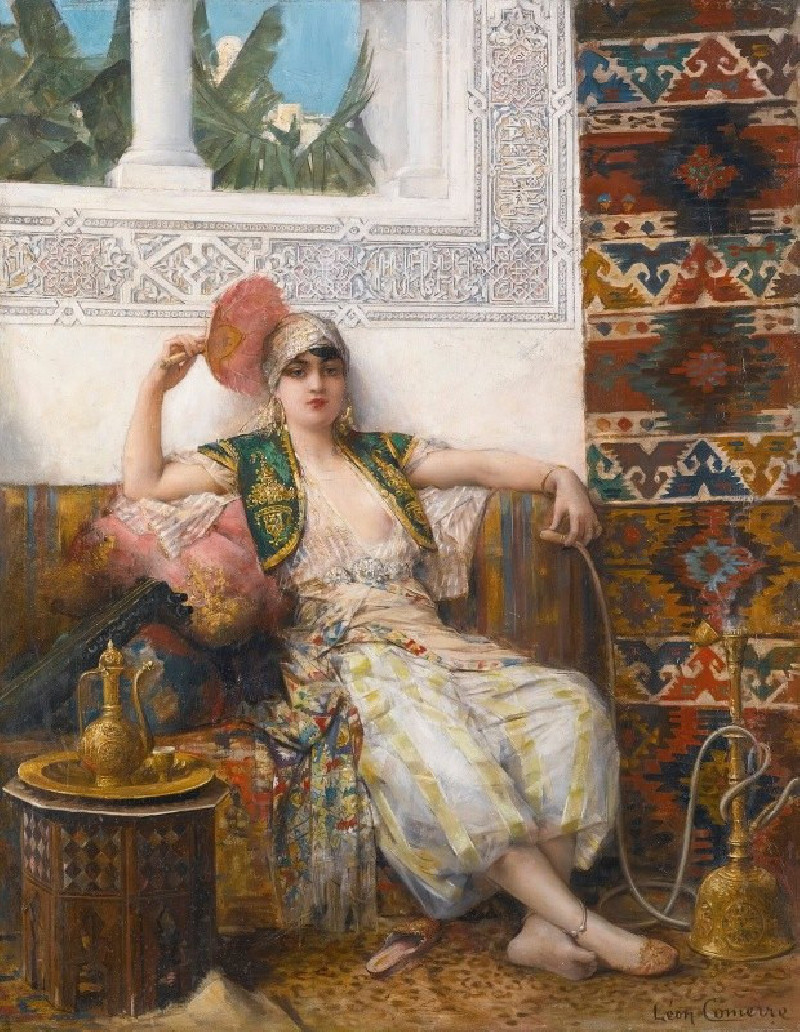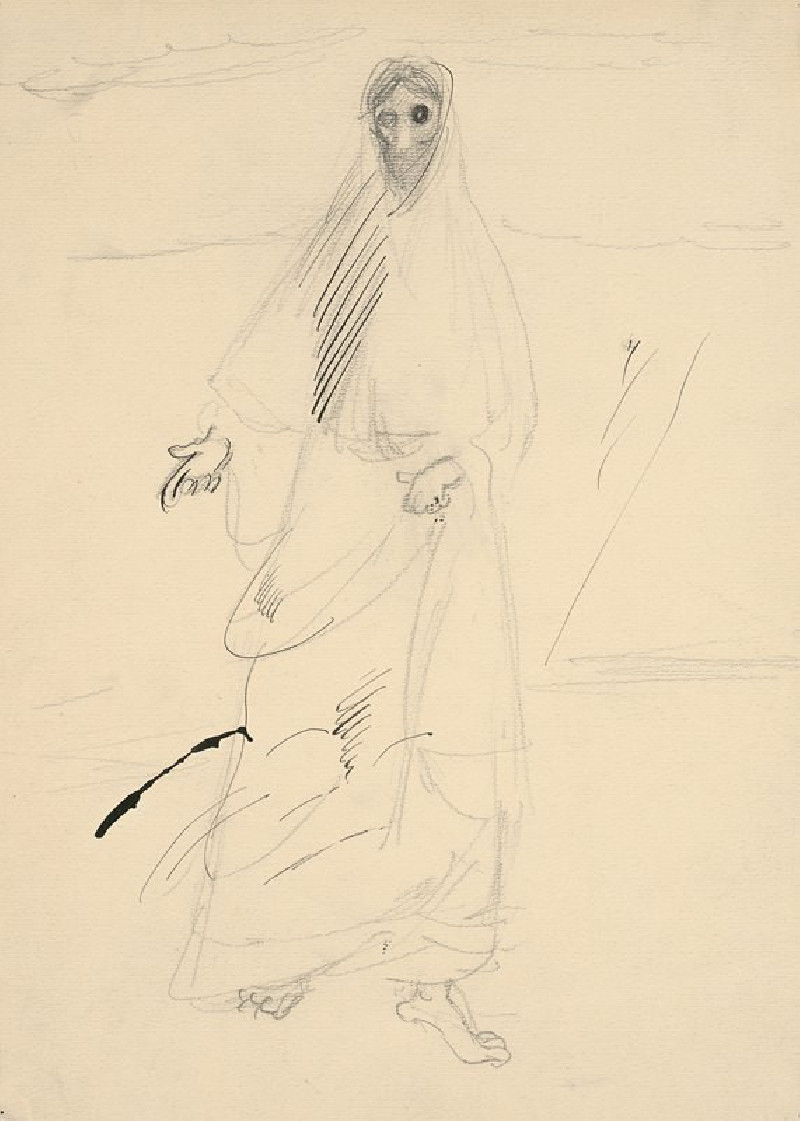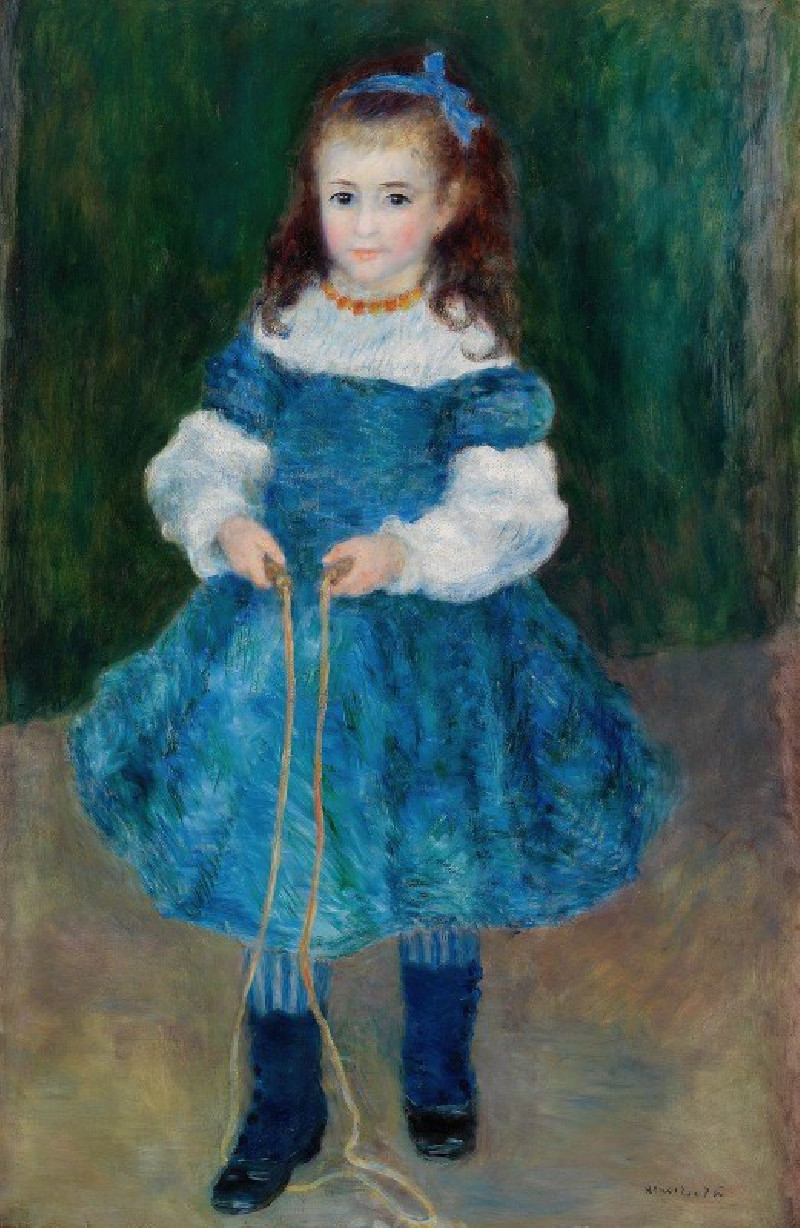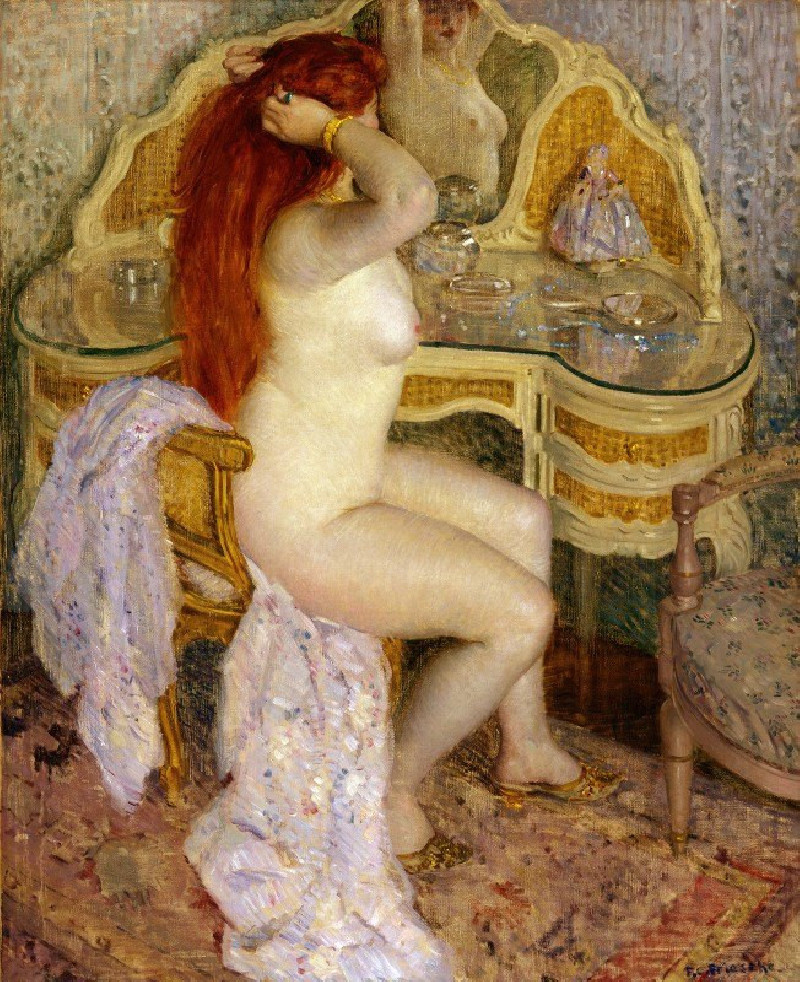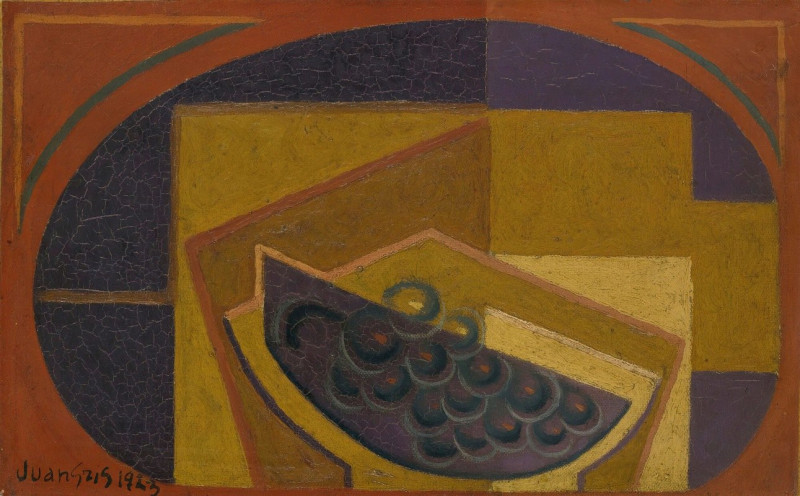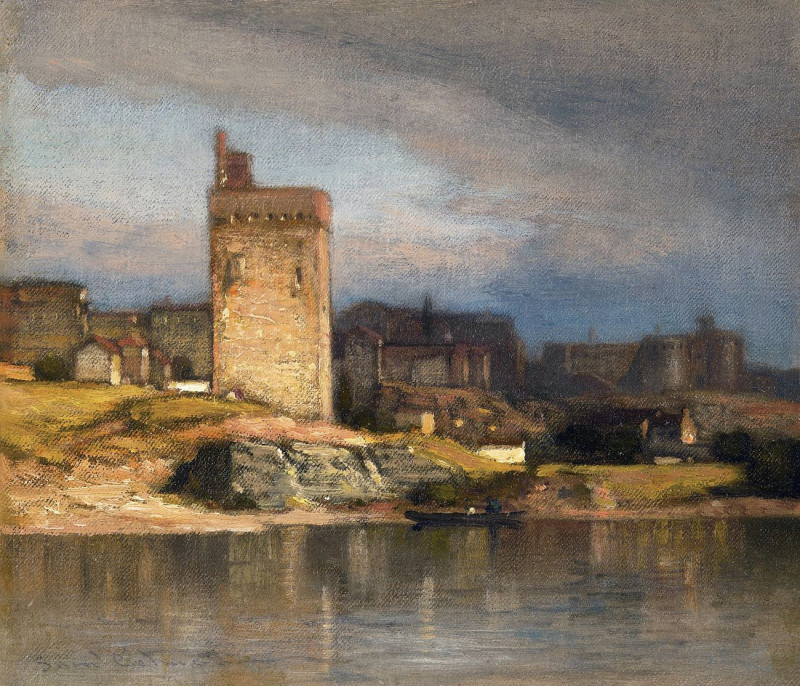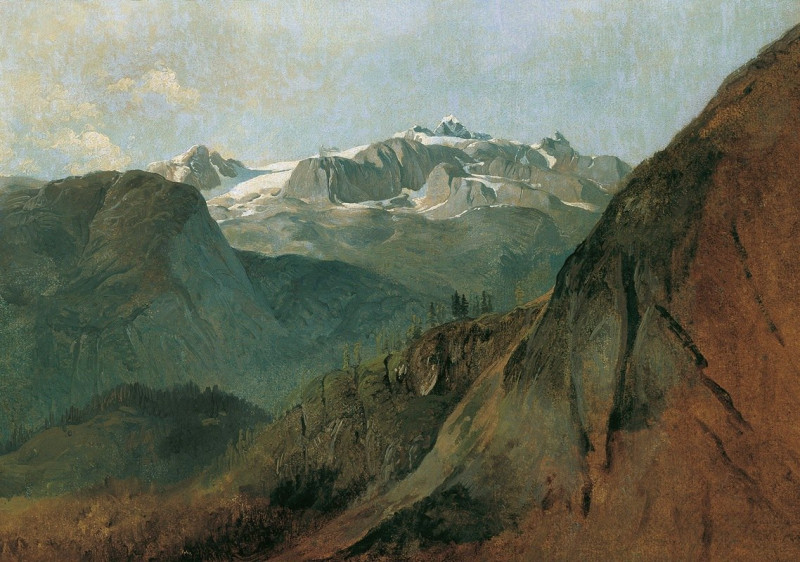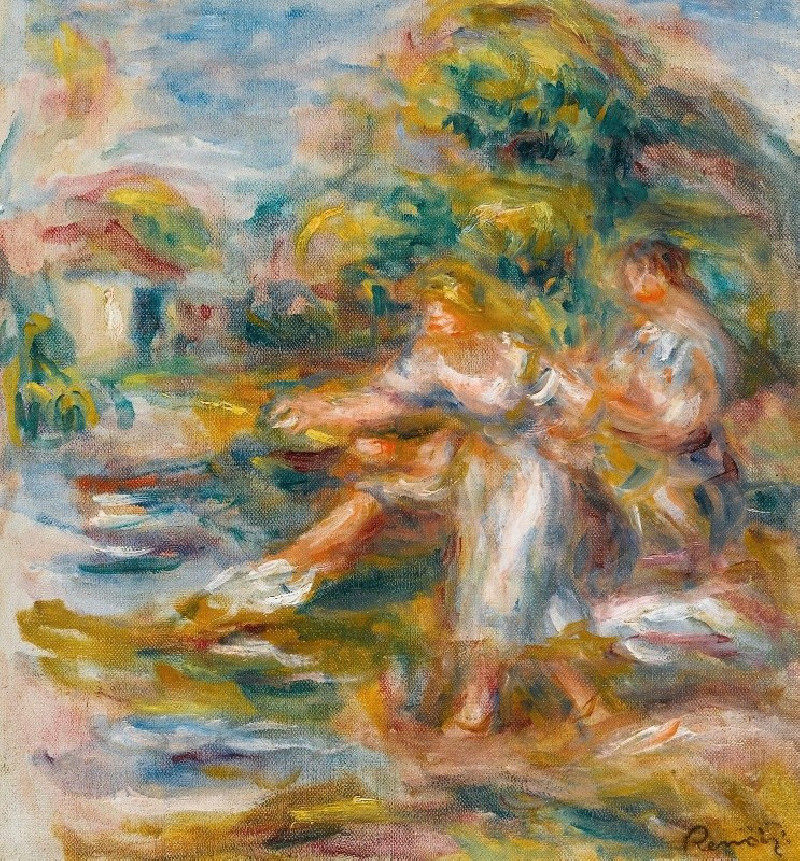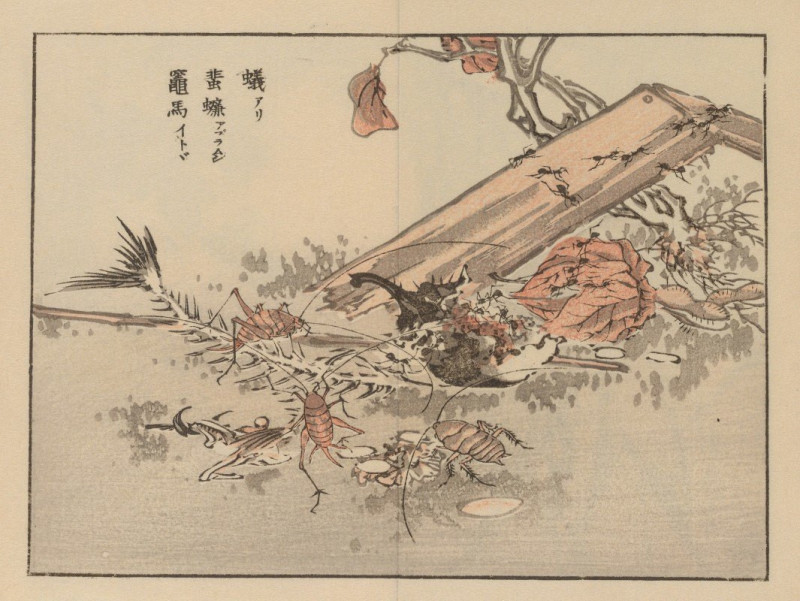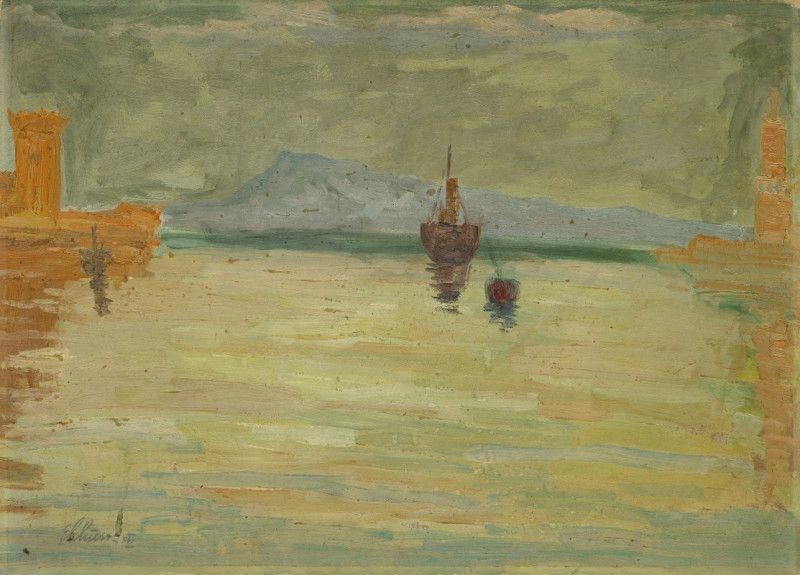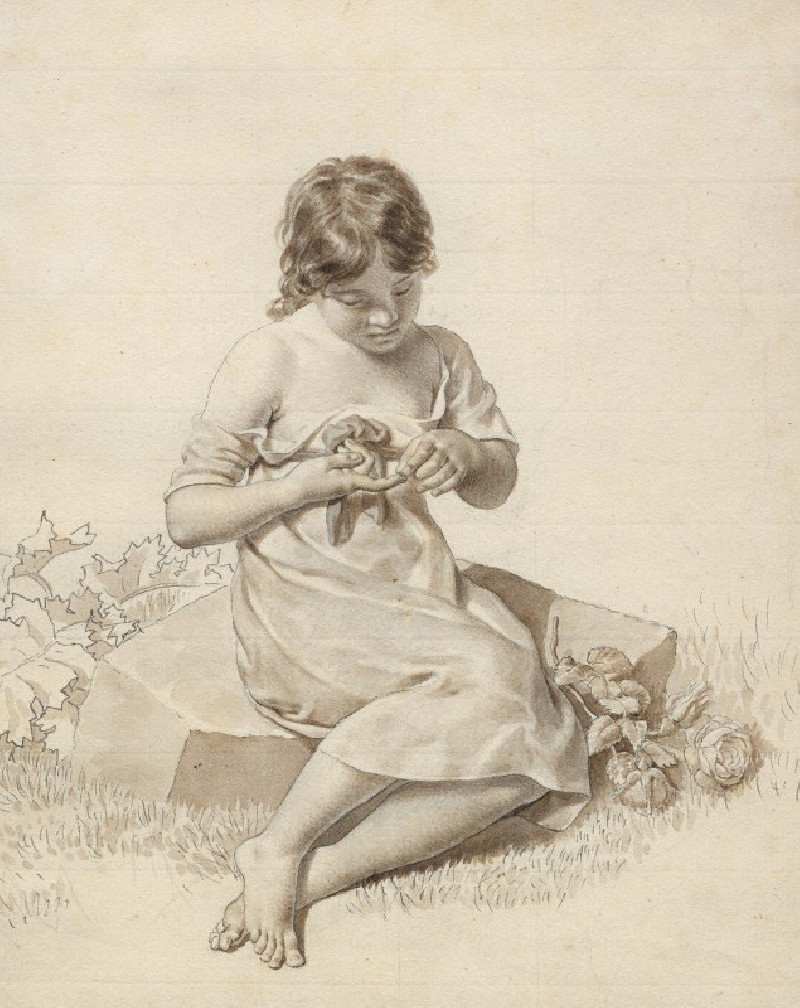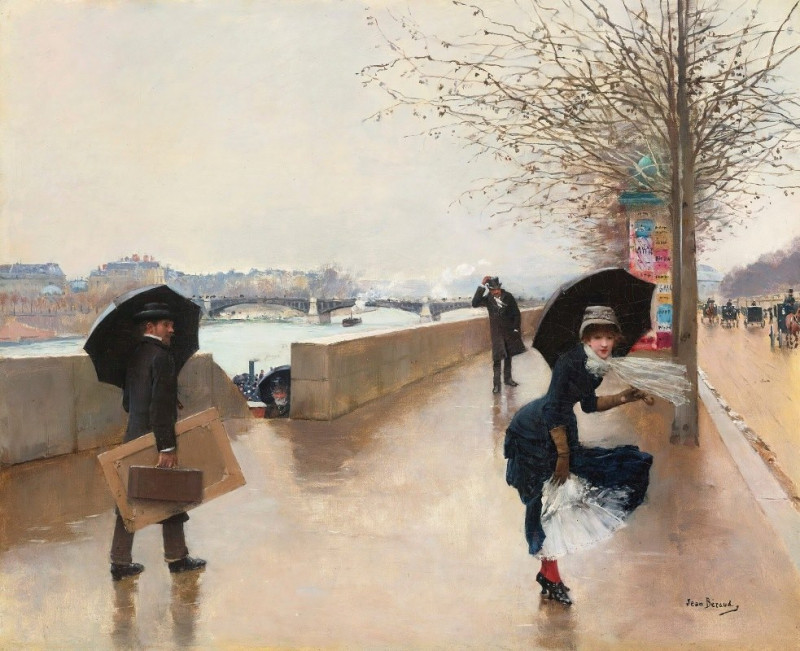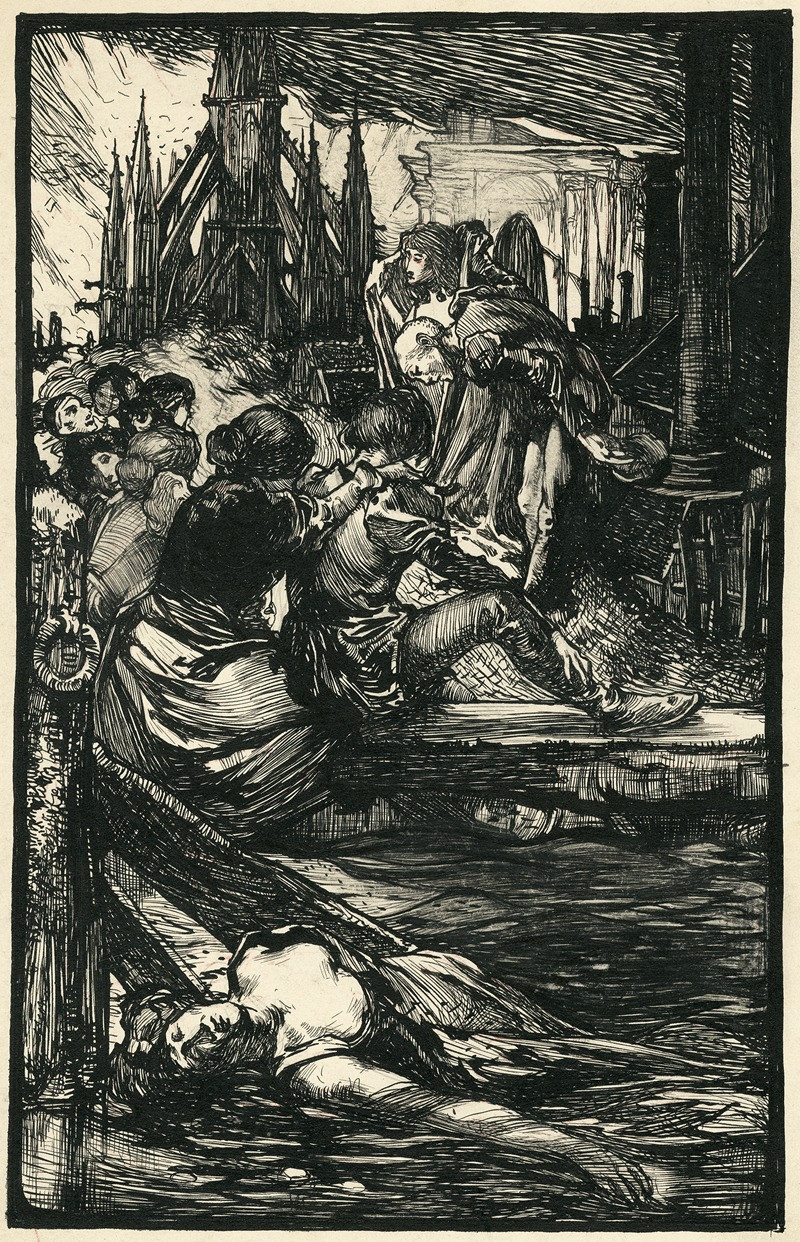L’eau
Technique: Giclée quality print
Recommended by our customers
More about this artwork
Explore the tranquil and ethereal beauty of Léon François Comerre's artwork, "L’eau." This exquisite painting captures the spirit of water through the dynamic portrayal of figures immersed in a serene aquatic setting. The masterful sketch in subdued tones of blue and grey along with touches of earthy colors, depicts a group of female figures gracefully floating and intertwined with the fluidity of the surrounding waters.The central figure in the foreground, adorned with what appears to be a crown of leaves, reclines languidly, her gaze wistfully directed away from the viewer, enhancing the atmosphere of introspective peace. The other figures, varying in clarity and detail, seem to interact lightly with each other and their environment, embodying the free and flowing nature of water.Comerre's skillful use of line and shading in this panoramic scene draws attention to the delicate forms and the subtle interplay of light and shadow, creating a sense of depth and movement.
Delivery
Returns
Léon François Comerre was a French academic painter, famous for his portraits of beautiful women and Oriental themes.
Comerre was born in Trélon, in the Département du Nord, the son of a schoolteacher. He moved to Lille with his family in 1853. From an early age he showed an interest in art and became a student of Alphonse Colas at the École des Beaux-Arts in Lille, winning a gold medal in 1867. From 1868 a grant from the Département du Nord allowed him to continue his studies in Paris at the famous École nationale supérieure des Beaux-Arts in the studio of Alexandre Cabanel. There he came under the influence of orientalism.

